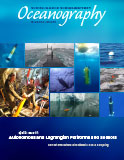Article Abstract
Biologging using Kerguelen Islands’ southern elephant seals (SES; Mirounga leonina) has been widely used to collect environmental parameters of the Southern Ocean. This study evaluates whether raw accelerometer and magnetometer data from biologging of SES can be used to predict above-surface wind conditions and wave period and height. From these sensors, SES behavior during post-dive surfacing time has been modeled with the Euler angles pitch, roll, and yaw. Environmental variables (i.e., wind orientation, wind speed, significant wave height, and mean wave period) have been extracted from the European Centre for Medium-Range Weather Forecasts (ECMWF) database, which assimilates satellite images into models to provide high-resolution environmental data. SES behavioral and environmental variables are analyzed together to test two hypotheses: (1) SES behavior is constrained by wind speed and/or direction, and (2) SES can be used as weather buoys to estimate wave parameters. Significant pair-wise correlation relations were observed, for example, between SES heading (i.e., yaw) and wind direction. SES vertical displacement was sufficient to estimate the mean wave period with a root-mean-square error below 2 s. Overall, biologged SES tend to orient their heads with the prevailing wind behind them, and are good ocean surface followers, showing great promise for the use of biologged SES as a proxy to collect reliable information on wind and wave conditions. Conversely, this study also suggests that SES respond to environmental conditions to optimize their energy recovery during post-dive surfacing time.

